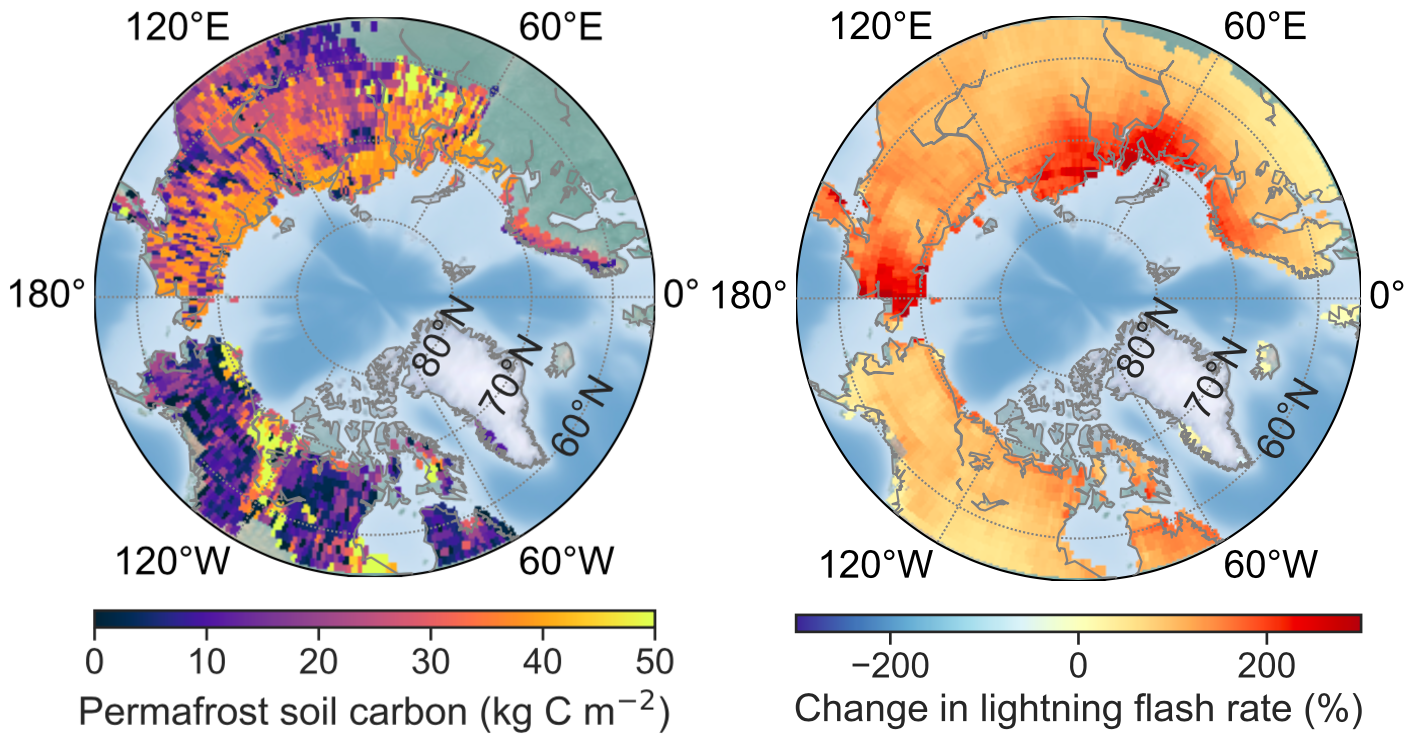Chen, Romps, Seeley, Veraverbeke, Riley, Mekonnen, and Randerson, Future increases in Arctic lightning and fire risk for permafrost carbon, Nature CC, 2021
Paper
Print coverage
Description
Lightning is both an indicator and a driver of climate change. Using satellite observations of lightning and historical weather data, we find that the spatial pattern of summer lightning over northern circumpolar regions increases strongly with a proxy that we have developed in recent years: the product of convective available potential energy (CAPE) and precipitation. Applying this relationship to climate projections in areas underlain by permafrost, we find that summer lightning will increase by 112 ± 38% by end of century.
Future flash rates at northern treeline are comparable to current levels 480 km to the south in boreal forests. We hypothesize that lightning increases may induce a fire-vegetation feedback whereby more burning in the Arctic tundra will expedite a northward migration of boreal trees by about that distance. This has the potential to accelerate the positive feedback associated with permafrost soil carbon release.
(left) The distribution of permafrost soil carbon. (right) The fractional increase in lightning projected for this century. The increase in lightning over areas of high permafrost carbon will accelerate the release of carbon to the atmosphere, accelerating warming.
